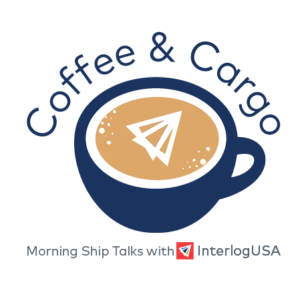Competitive Edge
SEVERE WEATHER – Storm Front Impacting Canadian Prairies
Beginning yesterday and through tomorrow, a winter storm front will be making its way through the Canadian Prairies. Yesterday, parts of British Columbia and Alberta were under public weather alerts for snowfall.
Rail movement is expected to be impacted. Freight railroad Canadian National (CN) has sent out advisories to customers warning them of possible service interruptions due to the storm.
COVID-19 UPDATE – Ningbo, China
Covid-related lockdowns and restrictions have eased. Port and terminal operations have resumed regular operations. Please refer to last week’s market update for a closer look.
UPDATE: U.S./Canada Ports – Number of Cargo Vessels at Anchor
- Vancouver: 36 Vessels at Anchor (+6)
- Savannah: 25 Vessels at Anchor (-7)
- Houston: 22 Vessels at Anchor (+2)
- San Francisco/Oakland: 11 Vessels at Anchor (+1)
- Mobile: 9 Vessels at Anchor (+3)
- New York/Newark: 6 Vessels at Anchor (-6)
- Los Angeles/Long Beach: 6 Vessels at Anchor (-4)
- Charleston: 2 Vessels at Anchor (+1)
Note: Count taken on November 1, 2022. This count does not include vessels moored and being unloaded at port docks. Colored numbers in parentheses represents the change from last week over. Data is courtesy of MarineTraffic’s live vessel traffic map.
Have another U.S. or Canadian port you’d like us to track weekly? Let us know!
Takeaways
- U.S. West Coast: WC congestion and port conditions have come a long way since last year. Unfortunately, behind this feat lies struggling rail service and uncertainty over when a new labor contract for dockworkers will be reached. Anxious shippers remain averting the WC for the EC.
- U.S. Gulf Coast: October saw Houston finding a new normal to its congestion numbers. The Gulf’s largest port is standing pat in the low twenties with little change over the last couple of weeks. Amid challenges with long-term dwelling imports, Houston is set to implement a fee for shippers that don’t promptly remove import containers from the port. Will this imposed fee scare off shippers?
- U.S. East Coast: In what appears to not just be simple lip service, Savannah’s port authority is following through with its assurance that the Georgian port will steadily eliminate vessels week-over-week from its backlog. Lower import volumes are certainly helping their cause.
- Canada: Well, we were wrong…for this week at least. While we are hopeful that Vancouver will sustain its reported improvements to berthing delays and rail service, a six ship increase doesn’t reflect a good eye test to this.
IMPORT: Asia to North America (TPEB)
Recent Developments:
- Contract negotiations between the International Longshore and Warehouse Union (ILWU) and Pacific Maritime Association (PMA) remain active. The existing labor contract between the two parties expired July 1.
- ILWU’s international president Willie Adams released a statement that both parties continue to regularly meet and assured an agreement has always been met over the past 90 years. Report courtesy of the Orange County Register.
- Los Angeles, Long Beach, and Houston remain impacted on the rail side of things. Dwell times are around 15 to 20 days. However, incremental improvements to congestion at some inland hubs are promising signs going forward.
Rates: Rates continue to fall. Notably from Chinese base ports to the USWC.
Space: Space is open.
Capacity: Lower demand has led to carriers reducing their capacities. However, capacity is generally open for transpacific eastbound trade.
Equipment: Chassis availability is increasing. Inland rail ramps remain congested.
TIPS:
- Book at least two weeks prior to the ready date.
- For cargo ready now, take advantage of open space and fallen rates on the spot market.
- Blank sailings are on the rise. Keep this in mind as it affects schedule integrity.
IMPORT: Europe to North America (TAWB)
Recent Developments:
- Northern European hubs, such as Rotterdam, Antwerp, and Hamburg, remain congested.
- Labor-related tensions remain gripping Great Britain’s ports as dockworker unions seek a new pay deal that will match with inflation rates. Workers at both ports have engaged in recurring walkouts over the last couple of months. No deal or tentative agreement have been reached.
- Nearly 600 dockworkers at the Port of Liverpool began another strike on October 24. This strike is expected to last two-weeks.
Rates: Rates have seen some decreases. However, not at the same clip as other trade lanes. When more capacity is introduced, expect rates to trend downward.
Space: Space remains tight to the USEC and open (in pockets) to the USWC.
A niche string has been announced by a new carrier calling at Turkey, Italy, and Spain to New York. Contact us for more information.
Capacity: Capacity is increasing as carriers are adding larger vessels to USEC loops in November.
Equipment: Equipment availability at European seaports is still in a crunch. Inland terminals in Europe are also still reporting equipment shortages. On the U.S. side, chassis availability has improved.
TIPS:
- Book five or more weeks prior to ready date.
- Stay up to date with your forwarder and carrier with advisories on added capacities and declining rates for the trade lane.
- Strongly consider premium services for no-roll options and improved reliability of cargo.
EXPORT: North America to Asia
Recent Developments:
- Export volumes at Oakland saw a year-over-year 12 percent dip in September.
- Exporters have been wearied to book as schedule reliability from carriers has not been predictable.
- Congestion remains contributing to operational challenges at Savannah and Houston.
- Vessel arrivals remain smooth for USWC POLs.
Rates: So far, no GRIs announced for November.
Capacity: Available capacity remains fluid for USWC POLs.
Equipment: Inland ports still are reporting container and chassis deficits (the latter improving). Standard equipment at ports remains available unless advised otherwise.
TIPS:
- Book four to five weeks prior to the time of departure to secure necessary equipment and vessel space.
DOMESTIC TRUCKING:
Could the industry be changing to LTL dimensional pricing programs soon?
- This method of pricing would provide straightforward quotes based on a shipment’s weight, dimensions, how much space it takes up on a trailer, and origin and destination zip codes provided from the shipper.
- Then, once the shipment is received, technology would be used to verify the information.
- This method would provide a better way to build fair and accurate rates. While not having to rely on the “classification formula” – that has been the standard of LTL pricing for decades.
InterlogUSA Proudly Presents... Our New Podcast!

Offering insights into breaking news, market trends, our company’s history, and more.
“FreightFM” features short-form video interviews with InterlogUSA’s industry experts.
Did You Know: 300+ industry groups signed and sent a letter asking the President to ensure labor contracts be ratified
So far six rail unions have voted to ratify their labor agreements. While two unions voted to reject their labor agreements – BMWED and BRS – and remain in “status quo” until November 19th and early December, respectively.
Four rail unions are left to vote, with the two largest rail unions expected to announce results between November 17th and November 21st.
We will continue to monitor the situation and update accordingly.
Source: Supply Chain Dive
Freight News
Off-site container storage efforts
The U.S. Department of Transportation (DOT) has received feedback, regarding efforts for more off-site container storage, with some stating how relieving port congestion has potential downsides like additional costs related to trucking, FreightWaves reports.
The plan, which is included in the Ocean Shipping Reform Act – which requires the DOT, the U.S. Maritime Administration and the U.S. Federal Maritime Commission to meet and discuss the use of federal (and other sites – like inland ports) and how they are used for storing and transferring containers from said congested ports.
The meeting took place on September 26th and afterwards, comments from the transportation industry poured in, to assess the idea.
Some in the industry feel while no port wants to have containers lingering for excessive amounts of time, using inland ports to move certain containers via rail, barge, or other method can help the number of containers waiting for drayage, which can in turn reduce truck and chassis congestions at the seaport itself. However, some also note that while that can improve fluidity, it usually requires second re-handles and inefficient routing to move the cargo. Even when inland ports
FreightWaves also noted that even inland ports that have direct rail connections can be vulnerable, as they are having their own congestion issues.
The DOT also asked members in the industry what are some ways the government could do to assist. Some responded that federal funding is important. But, mentioned that a barrier for many ports to be able to access these grants are the match requirements. If match requirements for developing ports were to be reduced, it will allow more ports to access the funding, instead of making them competitive.
The U.S. DOT has awarded over $700 million in grants to improve port infrastructure
In an effort to improve port infrastructure in the U.S., the DOT has awarded $703 million in grants for 41 projects to 22 states and 1 U.S. territory. This funding comes from the DOT’s $65 billion Bipartisan Infrastructure Law, plus aid from Congress – reports show.
About $214 million will go to California towards container port operations such as the construction of a 25-acre container facility at the Port of Oakland to updating equipment and cargo-handling operations at the Port of Long Beach.
The Port of Oakland will receive a little over $36 million to fund the construction of an off-dock container support facility with truck entry and exit gates, refrigerated container storage and plugs, and grounded and wheeled container storage, among other things.
The Port of Long Beach will receiving for some funding towards 60 electric yard tractors, construction of electric equipment charging infrastructure, and installation of software equipment to streamline cargo-handling operations within the Middle Harbor Terminal.
The Port of Alaska received the largest single grant for a project to help reconfigure and realign the shoreline. The Port of Portland was awarded funds to help reinforce foundation work for nine acres of flexible cargo storage and 30 acres of container yard, among other projects. The Port of Seattle received funding for construction of a new truck gate complex and construction of a cargo container storage yard.
Additionally, the Port of Jacksonville was awarded funds to help install electrified refrigerated container tacks, purchase new cranes, forklifts, and other equipment, and develop a scalable plan for transitioning the port and local maritime industry to zero-emission technologies.
Missed a Blog from Last Month?
Check Them Out Below:
A Variety of Challenges Have Hindered Reefer Container Volumes in 2022
Mississippi River Experiencing Drought: Will It Impact Waterborne Trade?
Air Cargo is Down but Is It Still Showing Some Resilience?
U.S. Retailers Struggling to Find the Right Balance of Inventory
Canada is Changing the Way Its Ports Work
Chills & Thrills: Halloween Candy Prices Have Increased Compared to Past Years, Retailers Biggest Challenges for Halloween
Sign Up for This Month's Webinar

Make sure you sign up for our next webinar, which will be taking place on Wednesday, November 16th.
We will be having some special guests on this upcoming webinar, which we will be sharing very soon who they are!
If you have never seen our Coffee and Cargo webinar, click the "Watch Now" button below to view our most recent webinar!
Interlog  Insights
Insights
Sign up for our brand new Interlog Insights newsletter where we send out weekly predictions from our experts regarding the freight industry! This is a good way to stay up to date on what is happening in the freight world and also get a peek into what we expect may be to come!
Sign up for our
industry answers
Our team works to provide valuable, unique, and relevant content to assist you in finding solutions. Sign up now.


